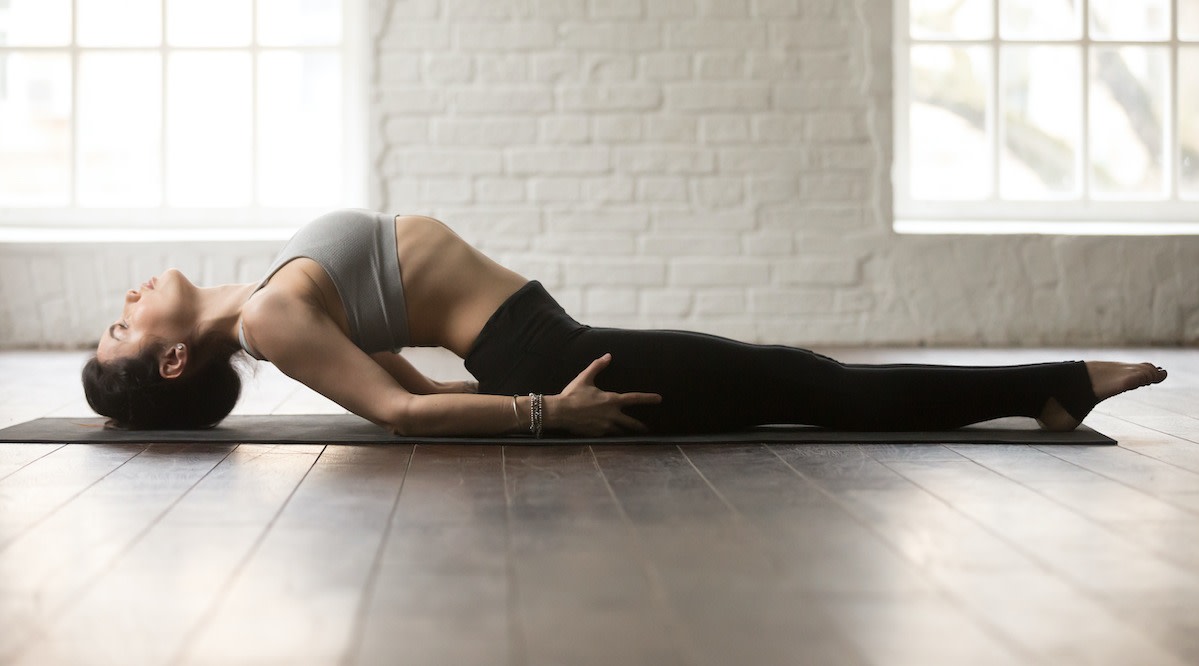How to Do Fish Pose: 5 Fish Pose Modifications
Written by MasterClass
Last updated: Jun 7, 2021 • 4 min read
Fish pose is a reclined, standalone yoga posture with many physical benefits.
Learn From the Best
What Is Fish Pose?
Fish pose (Matsyasana) is a reclined, back-bending yoga posture that stretches and opens up the throat, chest, abdomen, and shoulders. In Sanskrit, Matsyasana means fish (Matsya) and pose (asana). The chest-opening pose involves lying on your back and flexing while placing your weight on your forearms and hips.
Fish pose is a part of sequences in Iyengar, Hatha, Vinyasa, and Yin yoga, where it is a counter-pose to the shoulder stand (Sarvangasana), which works similar muscles. The neck-constricting pose stretches the hip flexors, intercostals (muscles around the rib cage), neck, and back muscles, improving spinal flexibility and respiratory health, and combating fatigue and anxiety.
4 Benefits of Fish Pose
Fish pose provides many benefits when practiced mindfully and in synchrony with deep, elongated breathing:
- 1. Reduces fatigue and anxiety: This deep opening of the heart space increases energy and releases the tension in the shoulder area.
- 2. Can relieve constipation and menstrual cramps: The stretch that fish pose provides in the abdomen can help massage the internal organs that cause these two symptoms.
- 3. Promotes respiratory health: The expansion of the chest opens the lungs and helps encourage deep breaths into the bottoms of these organs.
- 4. Improves posture and flexibility in the spine: The stretch that fish pose provides in the neck and shoulders encourages a reversal in the rounding of the shoulders caused by hunching forward while sitting.
How to Do Fish Pose
Do not attempt fish pose if you have a neck injury or history of neck or lower back issues. Fish pose is one of the 12 classic Hatha yoga postures. The following is a step-by-step guide to practicing the most common variation of the pose:
- 1. Lie flat on your back on the yoga mat. Bring your legs long on the mat, keep the arms by the sides, and your chin tucked slightly to lengthen the back of the neck.
- 2. Bring your forearms to your sides. Face your palms down on the mat and press up into your forearms.
- 3. Lift the upper body off the ground. Allow the torso, chest, and shoulders to lift as you rest the crown of the head gently on the mat.
- 4. Rest your weight on your hips and forearms. To receive the maximum benefits of this pose, place your weight on your hips and forearms. Press into your hips and forearms to deepen the pose and lift the chest higher.
- 5. Keep the lower body on the ground. Ensure your legs and hips are rooted firmly on the mat.
- 6. Breathe and hold. Breathe deeply in and out through your nose, taking long exaggerated inhalations and exhalations. Hold the pose for as long as three minutes, if possible.
- 7. Gently release the pose. Lift your head first to protect your neck and lower it slowly to the ground, inch by inch. Rest in Savasana for a few breaths and then move onto another posture or round two of fish pose for an even deeper stretch.
5 Fish Pose Modifications
There are many different modifications and variations of fish pose that can either amplify the intensity of the stretch or create a little more ease and support as you move into this reclined backbend:
- 1. Lotus legs. According to B.K.S. Iyengar’s Light on Yoga, the traditional version of this pose begins with first coming into Padmasana, or lotus pose. From there, the practitioner leans back into fish pose, using the arms to make adjustments with the legs and hips before bringing grips to opposite elbows above your head.
- 2. Hands underneath the buttocks. With the palms down, slide your hands underneath the buttocks to intensify the depth in the backbend and create support simultaneously.
- 3. Use a block or two. Props are standard in Yin or Restorative yoga classes. You can place a yoga block underneath your mid-back or between the shoulder blades to lift the chest and deepen the backbend while simultaneously supporting the spine and allowing certain muscle groups to relax into the support of the blocks.
- 4. Folded blanket underneath the head. For comfort and support, place a folded blanket underneath the back of your head.
- 5. Suspend your legs and arms. This modification is solely for advanced practitioners. If you feel rooted in the hips and are under the guidance of a certified yoga instructor, try to lift the legs and arms in the air while in fish pose. Keep the majority of the weight in your body in your hips rather than your head.
How to Do Yoga Safely and Avoid Injury
Proper form and technique are essential to ensure the safety and effectiveness of a yoga practice. If you have a previous or pre-existing health condition, consult your physician before practicing yoga. Yoga poses may be modified based on your individual needs.
Ready to Learn More About Yoga?
Unroll your mat, get a MasterClass Annual Membership, and get your om on with Donna Farhi, one of the most celebrated figures in the world of yoga. Follow along as she teaches you the importance of breathing and finding your center as well as how to build a strong foundational practice that will restore your body and mind.
